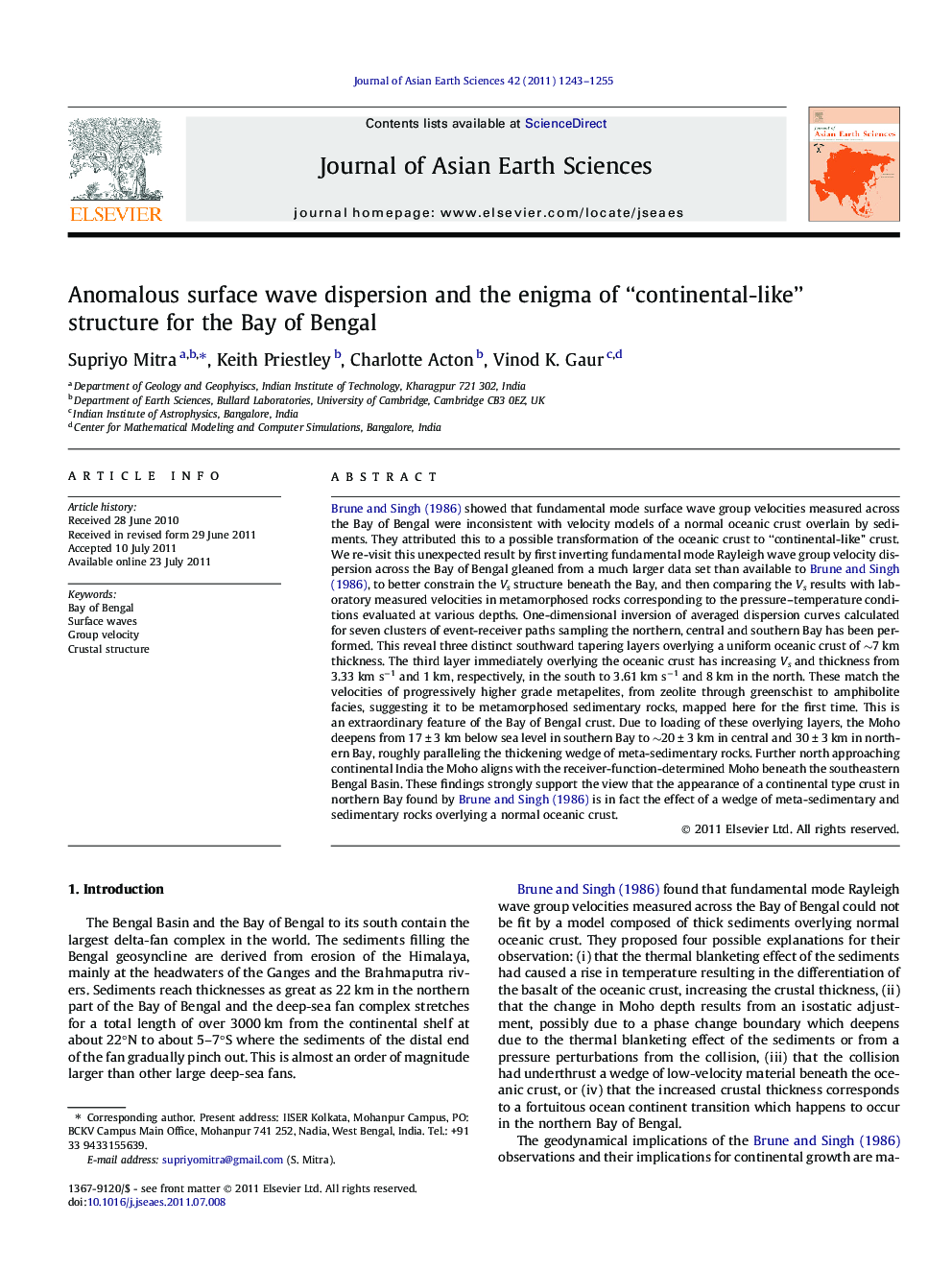| کد مقاله | کد نشریه | سال انتشار | مقاله انگلیسی | نسخه تمام متن |
|---|---|---|---|---|
| 4731691 | 1356817 | 2011 | 13 صفحه PDF | دانلود رایگان |

Brune and Singh (1986) showed that fundamental mode surface wave group velocities measured across the Bay of Bengal were inconsistent with velocity models of a normal oceanic crust overlain by sediments. They attributed this to a possible transformation of the oceanic crust to “continental-like” crust. We re-visit this unexpected result by first inverting fundamental mode Rayleigh wave group velocity dispersion across the Bay of Bengal gleaned from a much larger data set than available to Brune and Singh (1986), to better constrain the Vs structure beneath the Bay, and then comparing the Vs results with laboratory measured velocities in metamorphosed rocks corresponding to the pressure–temperature conditions evaluated at various depths. One-dimensional inversion of averaged dispersion curves calculated for seven clusters of event-receiver paths sampling the northern, central and southern Bay has been performed. This reveal three distinct southward tapering layers overlying a uniform oceanic crust of ∼7 km thickness. The third layer immediately overlying the oceanic crust has increasing Vs and thickness from 3.33 km s−1 and 1 km, respectively, in the south to 3.61 km s−1 and 8 km in the north. These match the velocities of progressively higher grade metapelites, from zeolite through greenschist to amphibolite facies, suggesting it to be metamorphosed sedimentary rocks, mapped here for the first time. This is an extraordinary feature of the Bay of Bengal crust. Due to loading of these overlying layers, the Moho deepens from 17 ± 3 km below sea level in southern Bay to ∼20 ± 3 km in central and 30 ± 3 km in northern Bay, roughly paralleling the thickening wedge of meta-sedimentary rocks. Further north approaching continental India the Moho aligns with the receiver-function-determined Moho beneath the southeastern Bengal Basin. These findings strongly support the view that the appearance of a continental type crust in northern Bay found by Brune and Singh (1986) is in fact the effect of a wedge of meta-sedimentary and sedimentary rocks overlying a normal oceanic crust.
► We model Rayleigh wave group velocity dispersion data for Bay of Bengal.
► Reveals “Normal” oceanic crust overlain by meta-sedimentary and sedimentary layers.
► Wedge of Meta-sedimentary rocks mapped for the first time in the Bay of Bengal.
► Explains the “continental-like” appearance of the northern Bay structure.
Journal: Journal of Asian Earth Sciences - Volume 42, Issue 6, 11 November 2011, Pages 1243–1255